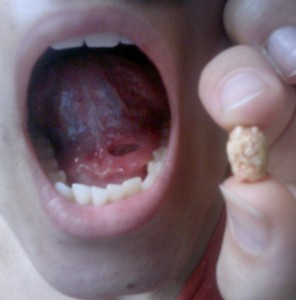Surgeries at the head and neck
3. Excision of lithiasis (stone) in the salivary glands canal.
Salivary glands, the parotid and submandibular secrete saliva through respectively the Stenon and Wharton’s canals. Like the kidneys, the salivary glands can contain stones, also known as lithiasis. When these lithiasis block the drainage of saliva to the oral cavity, the glands become clogged, increase in size and become painful. Fortunately, these stones are spontaneously evacuated but sometimes in some cases, the canal remains blocked and the gland becomes infected.
Treatment consists of taking antibiotics for infection or ablation of lithiasis. In some cases it is necessary to perform a resection of the patient’s salivary gland.

Several techniques may be used for ablation of lithiasis depending on its size and position:
- If the lithiasis is palpable and close to the outlet of the excretory duct, the latter is removed under local anesthesia by opening the end of this canal. The technique is relatively simple. The incision is made with reference to the lithiasis in the canal axis.
- If the lithiasis is located further within the gland but not too large, it can be removed by inserting a very thin endoscope with a small clip (sialendoscope) in the exhaust duct of the gland. It is also performed under local anesthesia.
- If there is indication for surgical removal of the gland, this surgery is performed under general anesthesia at the hospital.
__________________________________
Surgeries performed under local anesthesia at the Polyclinique Centre-Ville
Ear Surgeries:
- Myringotomy + insertion of a transtympanic tube
- Long term subcutaneous tube
- Tympanoplasty or myringoplasty
- Perilymphatic fistula surgery
- Ossicular reconstruction
- Stapedectomy
